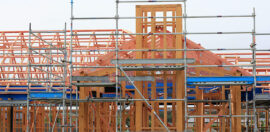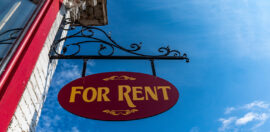Vulnerable renters left behind in growing affordability crisis

29 April 2021 at 8:00 am
New research reveals rental affordability in Australia is getting worse
The permanent $25 a week boost to JobSeeker has failed to make an impact on rental affordability, with new analysis of more than 74,000 rentals across the country showing just three are affordable for a person on the payment.
Anglicare Australia’s latest rental affordability snapshot surveyed 74,266 rental listings in March to see how many were affordable for people on low incomes, meaning rent was no more than 30 per cent of a household’s budget.
While only three rentals – including sharehouses – were affordable for a person on JobSeeker, it was worse for people on Youth Allowance, with not a single affordable rental across the country.
The snapshot also found there was a low percentage of affordable rentals for people on the minimum wage (1.2 per cent), the Age Pension (0.5 per cent), and the Disability Support Pension (0.3 per cent).
This research follows the federal government’s recent decision to permanently boost the JobSeeker Payment by $3.57 a day – despite charities calling for at least a $25 a day increase to raise it above the national poverty line.
The modest increase has not lessened the affordability burden for welfare recipients. In fact, Anglicare’s research shows affordability has only become worse.
Last year’s snapshot found that with the temporary doubling of JobSeeker through the coronavirus supplement, just 1,040 rentals (1.5 per cent) were affordable for a person on the payment.
Without the supplement included, there were nine rentals out of 69,997 properties (0.013 per cent) that were affordable for jobseekers in 2020, compared to three out of 74,266 (0.004 per cent) this year with the new rate.
Anglicare Australia executive director Kasy Chambers said as the nation bounced back from the pandemic, vulnerable renters were “being left out of the recovery”.
She told Pro Bono News it was clear that the JobSeeker rate was inadequate and must be pushed above the poverty line.
“Last year we found that the doubling of JobSeeker didn’t really [impact] affordability. It did mean that people were paying 40 and 50 per cent of their income instead of 80, but it really didn’t touch it a lot,” Chambers said.
“And if the minimum wage isn’t [enough] to see affordability in the market, then the rate of JobSeeker isn’t enough either.
“Every year we think this can’t get worse. And then you see numbers like that and you think ‘okay it can get worse’.”
Chambers pointed to the affordability rate for two parents (with two children) working full-time on the minimum wage as a key indicator of things getting worse.
While this rate has consistently sat in the low 20s, it fell from 22 per cent last year to 14.3 per cent.
“That is a severe hit in affordability,” she said.
Another “really disturbing” element of the report that Chambers noticed was that about a quarter of the affordable rentals were actually National Rental Affordability Scheme properties.
“And we know that that scheme has [not been renewed]. That means properties that were put into that scheme for 10 years are going to run out. So this is going to get worse,” she said.
Anglicare has renewed its call for 500,000 new social and affordable rentals to be built across Australia to address the long-standing national shortfall.
Chambers said the construction of these properties would also provide much needed stimulus nation-wide.
She added that this level of investment would allow low-income Australians to live more comfortable and healthy lives, which in turn would save government money on health and social services.
“If governments think they’re going to save money by cutting welfare benefits and not having affordable housing, well that might be true in a six-month period. But over a lifetime, that’s not going to save money. That’s going to cost money,” she said.
“And being a government is about showing leadership and enabling a society to live its best life. So economically and morally, it makes sense to invest.”







